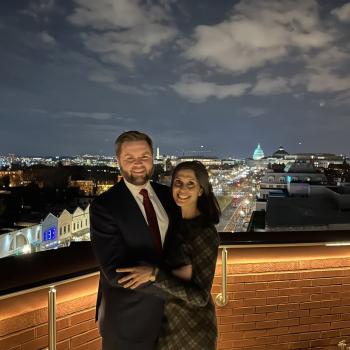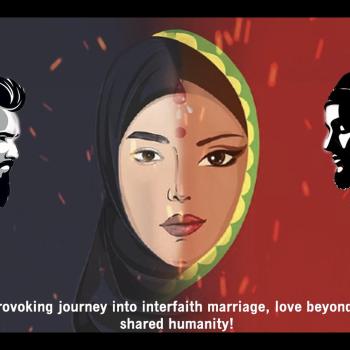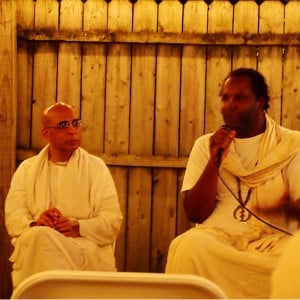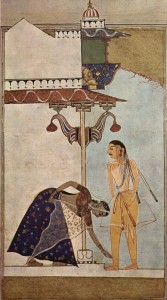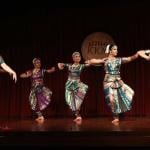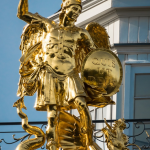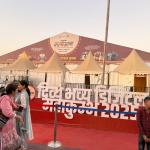Yesterday morning I tweeted a news story from the Huffington Post about a Sikh who wants to join the ROTC but is being prevented from service because of his beard and long hair/turban. I commented that I was surprised at the attacks in the comments. A day later, it’s still on my mind. I know, one shouldn’t be surprised by attacks in the comments section of any internet site. But when all the comments were attacks, and when I was expecting this man to have some support, I was caught off-guard. I rarely agree with conservatives on anything, but they do have a point when they say that liberals are tolerant of anything unless it’s religion.
I’m not qualified to blog about Sikhism, but since Patheos doesn’t have any Sikh bloggers, I was afraid this story might not get covered.
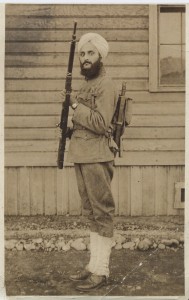
Sikhs have served in the US military for decades. In WWI, 138,000 Sikhs fought for the Allies. Prior to the 1980’s, there was no problem with Sikhs in the military keeping their beards. A 1986 beard ban has barred most Sikhs from serving in the last two decades. (The beard ban also means that Orthodox rabbis are barred from being chaplains).
What has happened in the decades since has been a series of lawsuits and the occasional Sikh being allowed exemptions. Here are a few articles about this ongoing conflict:
From the NY Times: Army Allows a Sikh Doctor to Serve Wearing a Turban
From the Army’s own website: Sikh Soldiers allowed to serve, retain their articles of faith
From the Times of India: Sikhs demand right to wear turban in US Army
From Time: Military Recruitment Rules Conflict With Sikh American’s Faith (This article is about Iknoor Singh, the author of the piece from the Huffington Post.)
From the ACLU’s website: ACLU, UNITED SIKHS File Suit after U.S. Army Bars Sikh Student from ROTC Due to Beard, Unshorn Hair, and Turban (This is also about Iknoor Singh)
From the Washington Times: Sikhs with long beards complain they can’t go in U.S. military
From NPR: Uniform Rule May Keep Religious Americans From Military Service
From the Washington Post: Pentagon clarifies rules on beards, turbans for Muslim and Sikh service members
According to the Pentagon, requests for such religious accommodation will still be decided on an individual basis but will generally be denied only if the item impairs the safe use of military equipment; poses a health or safety hazard; interferes with wearing a uniform, a helmet or other military gear; or “impairs the accomplishment of the military mission.”
The “expression of sincerely held beliefs” may not be used as the basis for “adverse personnel action” or discrimination, the new regulations state. They spell out “hair,” “grooming practices,” and “religious body art” such as tattoos or body piercings as eligible areas for religious accommodation.
As you can see, this is an ongoing legal battle. The Sikh Coalition has a page devoted to Sikhs in the US Military.
Again and again internet comments state that the reason Sikhs can’t have a beard and turban is because they won’t be able to wear a helmet and gas mask. In this opinion piece from On Faith, Let Sikh Americans Serve in the U.S. Military, author Simran Jeet Singh says:
One of the more common arguments is that Sikhs are unable to wear helmets and protective masks over their turbans and beards, and therefore, they bring unnecessary risk to themselves and their peers. This claim is outdated and patently untrue.
Sikhs have a long tradition of military service and have not had a problem placing helmets over their turbans and uncut hair. Moreover, it has been years since the military developed protective masks that safely protect people with facial hair. This argument may have been relevant in the early twentieth century when the policy was first implemented. At that time gas masks were unable to sufficiently protect soldiers with facial hair. However, this issue has been resolved and no longer justifies excluding Sikh Americans from military service.
Across the pond, we have another story.
From the Telegraph: Where would the British Army be without the Sikhs?
From the Times of India: British Parliament pays glowing tributes to Sikhs and Indian Army for WWI role (This article is from two days ago.)
From Winston Churchill:
https://www.youtube.com/watch?v=EqrkCOOEnB4“British people are highly indebted and obliged to Sikhs for a long time. I know that within this century we needed their help twice [in two world wars] and they did help us very well. As a result of their timely help, we are today able to live with honour, dignity, and independence. In the war, they fought and died for us, wearing the turbans.”
One comment that stood out to me the most on the HuffPo article, the comment that made me decide to write about this topic, was this:
I have no sympathy for this guy, if you make a conscious decision to enter the Military, you also make a decision to abide by all its rules and head wear and facial hair are part of that. Period. Plus you religious conviction can’t be too strong if it centers on your hair cut
The sheer ignorance in that statement is one of the reasons I believe so strongly in the need for interfaith dialogue. This guy is assuming that since his own religious convictions don’t center on a haircut then no one’s should. Faith-must-look-like-mine-to-be-right syndrome. In fact, uncut hair is one of the articles of Sikh faith. From Wikipedia:
The five Ks (panj kakaar) are five articles of faith which all baptized Sikhs (Amritdhari Sikhs) are obliged to wear. The symbols represent the ideals of Sikhism: honesty, equality, fidelity, meditating on God and never bowing to tyranny.[42] The five symbols are:
- Kesh: Uncut hair, usually tied and wrapped in a Dastar
- Kanga: A wooden comb, usually worn under a Dastar
- Katchera: Cotton undergarments, historically appropriate in battle due to increased mobility when compared to a dhoti. Worn by both sexes, the katchera is a symbol of chastity.
- Kara: An iron bracelet, a weapon and a symbol of eternity
- Kirpan: An iron dagger in different sizes. In the UK Sikhs can wear a small dagger, but in the Punjab they might wear a traditional curved sword from one to three feet in length.
Anyone remember the story a few years back about a Sikh woman on the OSU campus here in Ohio? Someone snapped a photo of Balpreet Kaur, who has facial hair, and posted it on Reddit to ridicule her. This was her response:
Hey, guys. This is Balpreet Kaur, the girl from the picture. I actually didn’t know about this until one of my friends told on facebook. If the OP wanted a picture, they could have just asked and I could have smiled 🙂 However, I’m not embarrased or even humiliated by the attention [negative and positve] that this picture is getting because, it’s who I am. Yes, I’m a baptized Sikh woman with facial hair. Yes, I realize that my gender is often confused and I look different than most women. However, baptized Sikhs believe in the sacredness of this body – it is a gift that has been given to us by the Divine Being [which is genderless, actually] and, must keep it intact as a submission to the divine will. Just as a child doesn’t reject the gift of his/her parents, Sikhs do not reject the body that has been given to us. By crying ‘mine, mine’ and changing this body-tool, we are essentially living in ego and creating a seperateness between ourselves and the divinity within us. By transcending societal views of beauty, I believe that I can focus more on my actions. My attitude and thoughts and actions have more value in them than my body because I recognize that this body is just going to become ash in the end, so why fuss about it? When I die, no one is going to remember what I looked like, heck, my kids will forget my voice, and slowly, all physical memory will fade away. However, my impact and legacy will remain: and, by not focusing on the physical beauty, I have time to cultivate those inner virtues and hopefully, focus my life on creating change and progress for this world in any way I can. So, to me, my face isn’t important but the smile and the happiness that lie behind the face are. 🙂 So, if anyone sees me at OSU, please come up and say hello. I appreciate all of the comments here, both positive and less positive because I’ve gotten a better understanding of myself and others from this. Also, the yoga pants are quite comfortable and the Better Together tshirt is actually from Interfaith Youth Core, an organization that focuses on storytelling and engagement between different faiths. 🙂 I hope this explains everything a bit more, and I apologize for causing such confusion and uttering anything that hurt anyone.
The world needs more of Balpreet Kaur’s focus on cultivating virtue and leaving a legacy than “no sympathy for you” dude’s ignorance of other’s cultures and practices.


